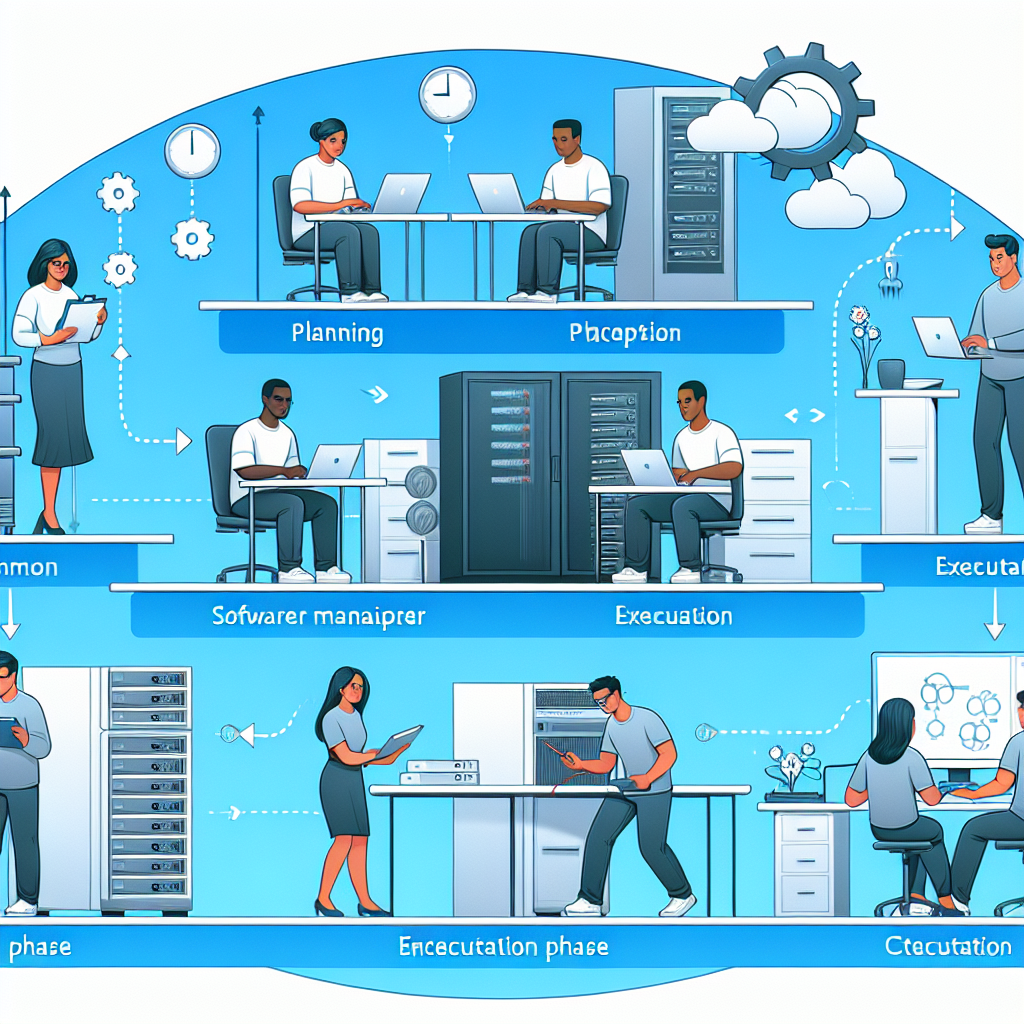
In the ever-evolving world of tech and customer service, Voice-Activated Service Ticket Creation makes its impressive entrance. This revolutionary tool combines the power of Artificial Intelligence (AI) and Natural Language Understanding (NLU) to drastically streamline service ticket creation and issue management.

With voice-activated service ticketing, users can simply speak their issues or requests into a device, and through advanced AI and NLU, the system comprehends the communicated problems, translating them into service tickets. This not only lowers the bar for issue reporting but also significantly speeds up the ticketing process. The implications for enhanced productivity and more efficient resource utilization are vast.
NLU, a subfield of AI, gives the system the ability to understand, interpret, and generate human language in a valuable way. It enables the application to grasp complex instructions, navigate human nuances, and gauge implicit context, providing a smooth, human-like interaction between the system and the user. In combination with AI's machine learning aspect, the voice-activated service ticketing system learns continuously from its interactions, improving itself as more tickets are generated, leading to enhanced accuracy and efficacy over time.
The user-friendly nature of voice-activated service ticketing and its potential for seamless issue management makes it a promising candidate for broad implementation across varied sectors, from IT services to customer support. Join us as we delve deeper into how this technical innovation is redefining the landscape of service ticketing and issue resolution.
When we talk about Voice-Activated Service Ticket Creation, we are essentially discussing a streamlined approach to handling critical business issue management. So, how does it work exactly? Let's delve into the process, from a user vocalizing an issue to the service ticket being created and logged in the system.
Firstly, the user voices out an issue they are experiencing. Using voice recognition technology, the system registers and transcribes the spoken words into written text. This conversion isn't limited to simple, rote transcription; the software is advanced enough to pick up on context and nuance, making it a powerful tool for retrieving precise and detailed problem descriptions.
Once the spoken words are transcribed into text, the system applies natural language processing (NLP), a subfield of artificial intelligence, to understand the issue's details and categories. Nearly instantaneously, the software breaks down and analyzes complex sentences into its key components, unraveling a user's complaint into structured, analyzable data.
Upon identifying the details and categories of the problem, the system proceeds to create a service ticket. This ticket isn't simply a paper trail; it comes with critical information about the issue, including the user’s name, problem brief, and categorized information related to the issue's nature. Moreover, it even provides potential solutions and escalation paths to provide immediate assistance to the user.
With Voice-Activated Service Ticket Creation, businesses can save time, remove manual ticketing errors, and improve customer experience. Its capability to capture nuances, apply context, and offer immediate solutions improves the efficiency and effectiveness of issue management in unique, pioneering ways.
Issues management in businesses has undergone a tremendous transformation with the advent of voice-activated ticketing systems. These systems are indeed proving to be a game changer as they empower businesses to streamline their issue management processes.

Voice-activated service ticket creation offers numerous benefits to businesses. Firstly, it significantly ramps up the speed of issue reporting and resolution. It bypasses the need for physically recording and logging an issue, making the process automatic and instantaneous. This translates into improved response times. Studies have shown that rapid response to issues greatly enhances customer satisfaction, thus giving businesses a significant competitive edge.
The accuracy in issue logging is another considerable advantage offered by voice-activated systems. Unlike manual methods that are susceptible to errors, these systems ensure every detail of the issue is logged accurately. Miscommunication can greatly delay issue resolution and lead to customer dissatisfaction. Hence, accurate issue logging could eliminate the pain points in the issue management process.
Finally, voice-activated ticketing systems foster a faster exchange of information between clients and service providers. This facilitates swift communication, which in turn accelerates issue resolution.
To sum up, voice-activated ticket creation systems offer a powerful means to streamline issue management, resulting in improved response times, higher accuracy in issue logging, and enhanced customer satisfaction.
Transitioning to a voice-activated ticketing system is a strategic move that can provide an edge in the highly competitive business environment. It is a worthwhile investment that promises not only enhanced operational efficiency but also higher customer satisfaction.
In the constantly evolving digital world, Voice-Activated Service Ticket Creation has emerged as an innovative, smart, and user-friendly approach to streamline issue management across various industries. Several real-world applications and case studies reveal the tangible benefits of this remarkable technology.
The Healthcare sector, for instance, has largely benefited from switching to voice-activated ticketing systems. The Hospital Sisters Health System (HSHS), serving parts of Illinois and Wisconsin, made a shift to voice-activated service ticket creation, following which, experienced nurses reported a 30% reduction in time to access patient information. They were now able to stay focused on the patients rather than having to manually create and track tickets. Read more about HSHS's experience.
Another striking example is the retail industry. The multinational conglomerate, Walmart, incorporated voice-activated ticket creation for their Customer Service departments. It led to speeding up the resolution process, cutting down on wait times, and improving customer satisfaction levels. Click here to know more about Walmart's technological advancements.
One more industry where the voice-activated service ticket creation has made a significant impact is IT and software. A known IT company, HelpSystems, has found that using voice activation to create service tickets has reduced ticket handling time by a notable measure and has bumped the accuracy in ticket content. Learn more about HelpSystems's approach here.
To sum up, the implementation of voice-activated service ticket creation across diverse industries has contributed to significant improvements in productivity, accuracy, and customer satisfaction. As the benefits of this technology become more prominent, it's expected to see its continued adoption across sectors.
Implementing a new technology such as voice-activated service ticket systems is not without its challenges. The first obstacle businesses may face is integrating the new technology with their existing systems. This integration process can be complex and time-consuming, especially if the current systems are outdated or not designed to work with voice commands. It's essential to plan the integration process carefully to prevent any operational disruptions.

Another potential challenge is user training. Employees need to understand how to use the voice-activated system effectively. Training programs should be comprehensive and straightforward, and might include everything from group training sessions to individualized instruction. Moreover, ongoing support should be available to address any queries or issues that may arise.
Furthermore, privacy concerns are a significant consideration when implementing voice-activated technology. Voice commands need to be recorded and processed, raising concerns about data security. Businesses need to ensure they are abiding by the General Data Protection Regulation and other relevant data protection laws. Communicating transparently with users about how their voice data is stored and used, as well as implementing robust data protection measures, can help to alleviate these concerns.
In conclusion, while voice-activated service ticket creation offers the potential to streamline issue management, businesses should be aware of the challenges that come with technology integration, user training, and privacy concerns. By addressing these challenges upfront, companies will be better equipped to reap the benefits of this innovative technology.
The rise of advanced technologies in the field of customer support has consistently worked towards making the interaction between businesses and customers as seamless as possible, and Gartner predicts this is a trend that will only continue to grow. One significant aspect of this growth is the emergence of voice-activated service ticket creation – a method that is simplifying the complexities of issue management.
With voice-activated ticket creation, the power lies in the ability to streamline the process of managing customer issues. This technology enables both service providers and consumers to manage tickets using simple voice commands, thereby drastically diminishing the amount of time spent filling in details manually. Moreover, AI capabilities are continually enhancing the precision with which voice commands are interpreted and implemented, stressing the importance of constant developments in AI voice technology.
Next-generation voice technology for customer support could include real-time language translation, multi-command process automation, and even sentiment analysis to understand and empathize with the emotional needs of customers. Voice-activated systems are marching towards a future where seamless 24/7 support will be the norm, blurring geographical and language barriers alike.
Moreover, service providers are potentially looking at integrating these advanced customer service systems with IoT devices around us. This integration would take convenience to an entirely new level, with your refrigerator, for instance, being able to place a service request on your behalf when it detects a malfunction. This advancement hints at a whole new dimension of automation and AI capabilities in service management.
While these predictions represent an ideal scenario of how voice-activated service ticket creation could evolve, challenges related to data security, infrastructure, and resources stand firm. However, the possibilities and benefits that AI voice technology offers make it an exciting field to watch in the future of service management.
Start your free trial for My AI Front Desk today, it takes minutes to setup!








